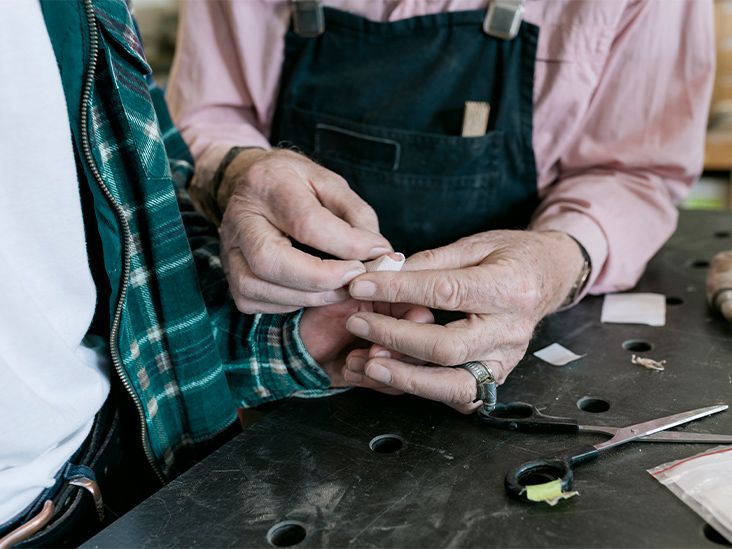Understanding Subungual Hematomas: Quick Drainage for Pain Relief

Understanding Subungual Hematomas: Quick Drainage for Pain Relief
If you've ever injured a finger or toe, you might have noticed blood accumulating beneath the nail. This condition is known as a subungual hematoma, commonly resulting from a crushing or stubbing injury. Over time, the accumulated blood can change color and, if left unattended, may lead to the nail falling off entirely (a process called avulsion).
Before reaching that stage, you might consider alleviating the pressure and pain by draining the hematoma. This procedure, medically referred to as trephination, involves creating a small opening in the nail to allow the trapped blood to escape. Trephination is generally a quick and relatively painless procedure that can be performed in a doctor's office or urgent care facility. Below, we cover essential aspects concerning the drainage of subungual hematomas, including timing, consequences of inaction, and when to seek professional help.
Timing: How Soon Can You Drain a Subungual Hematoma?
Healthcare providers recommend draining subungual hematomas if they cause significant pain or occupy 50% or more of the nail’s area. In cases where there's a fracture, drainage is advisable if the hematoma covers 25% or more of the nail. For optimal results, it's crucial to see a doctor within the first 48 hours post-injury, as blood starts to clot after this period, making drainage more complicated.
Recovery: How Long Does a Hematoma Take to Reabsorb?
The duration required for a hematoma to reabsorb varies depending on its size. Generally, it may take several months for a hematoma to diminish or grow out naturally without drainage. If your nail has fallen off due to the hematoma, expect it to take 4 to 6 months to regrow for fingernails and 12 to 18 months for toenails. Regrowth may sometimes feature ridges or other imperfections.
Consequences of Not Draining a Subungual Hematoma
While minor hematomas can frequently resolve without any medical intervention, you can manage mild cases by elevating the injured hand or foot, applying a cold compress to reduce pain and swelling, and utilizing compression to control bleeding beneath the nail.
However, larger hematomas may lead to complications. When drainage is not performed, you may endure intense pain and pressure on the nail. The blood underneath can cause the nail to change colors—from red to purple, dark brown, and even black—eventually resulting in partial or complete nail loss.
Seek medical assistance if:
- The bleeding does not stop on its own
- You experience severe pain
- The injury involves a fracture or an open wound that may require stitches
Procedure: How is a Hematoma Drained from Under the Nail?
It is crucial **not** to attempt draining a hematoma at home. Using makeshift methods such as a heated needle or paperclip can introduce bacteria, leading to infection—a potentially more serious issue than the initial injury.
The procedure doctors follow to drain subungual hematomas typically includes:
- Step 1: Clean the area using alcohol, iodine, or another antiseptic solution.
- Step 2: Administer a digital block, which provides pain relief or anesthesia; however, this step may not always be necessary unless there is additional damage.
- Step 3: Carefully drain the hematoma by applying gentle pressure with a heated 18-gauge needle or cautery device. Some clinics may even use specialized laser equipment. You may notice a “pop” as the needle enters the blood pocket beneath the nail.
- Step 4: Ensure the opening is about 3 to 4 millimeters in diameter to facilitate ongoing drainage. Additional openings may be required for larger hematomas.
- Step 5: Gently squeeze the nail to encourage blood drainage, then elevate the extremity.
- Step 6: Cover the site with a dry bandage and ensure it remains clean and dry during the healing process.
Immediate relief from pain and pressure is often experienced post-trephination, although some drainage may continue for a few days. Contact a healthcare professional if you notice symptoms of infection—such as fever, warmth, pus, or swelling—or if you experience complications like nail loss or the re-accumulation of the hematoma.
Conclusion
Subungual hematomas are prevalent after stubbing or crushing injuries to the fingers or toes. If you experience this injury, it's advisable to consult a healthcare professional without delay. Draining the hematoma is a straightforward and typically painless process that can significantly improve comfort, provided it's done promptly. Avoid attempting to drain it at home, as this can lead to unnecessary pain and complications.
